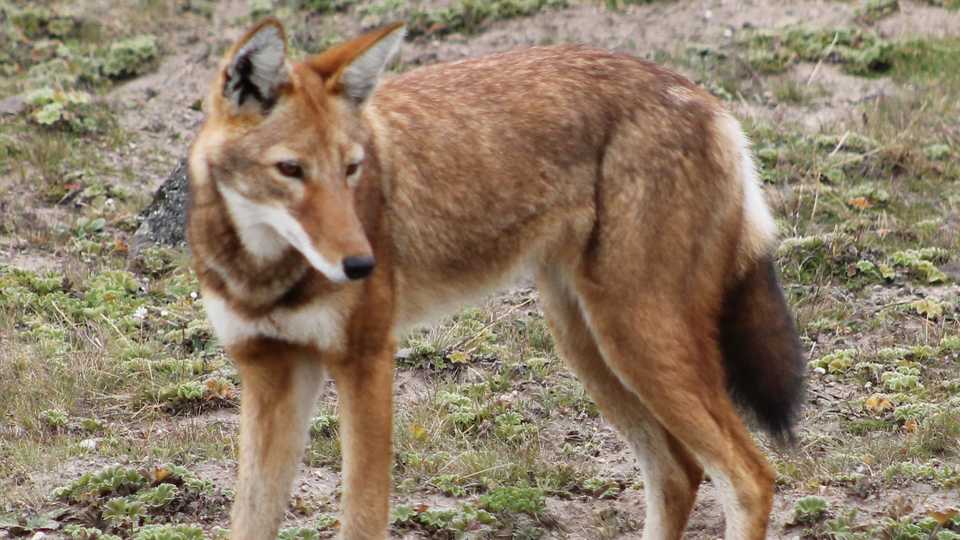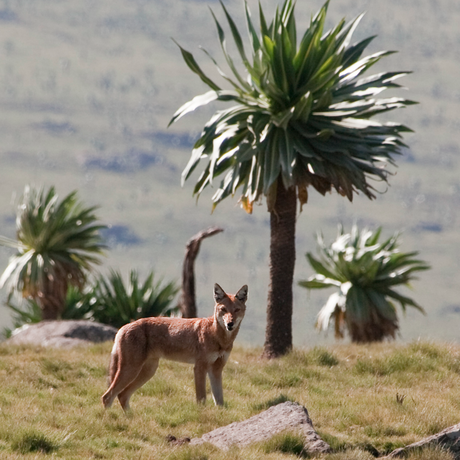Science News
Ethiopian Wolves

Have you heard of the Ethiopian wolf? It’s no surprise if you haven’t. It’s the rarest canid in the world, with fewer than 500 adult individuals. And it’s the most threatened carnivore in Africa, says scientist Claudio Sillero of the Ethiopian Wolf Conservation Program (EWCP). Sillero and his wife, Jorgelina Marino, spoke about the wolves at this year’s Wildlife Conservation Expo, and it’s clear they’re in love. With the wolves. Sillero has been studying and protecting these canids since 1987.
Sillero describes the Ethiopian wolves this way: “long-legged, red coat, gorgeous, about the size of a German shepherd.” The wolves live in large family packs and have relatively small home ranges. They hunt rats in the mountains—alone or in pairs—and breed once per year. Every member of a pack contributes to raising pups, Sillero says. Females will provide milk to pups—no matter whether the pups are theirs or nieces, nephews, or siblings.
Only a handful of these animals exist on either side of the Rift Valley, and Sillero describes them as “the guardians of the roof of Africa. By protecting these wolves,” he says, “we protect other wildlife.”
Ethiopia has the fastest-growing human population in Africa, and the country’s agriculture is expanding rapidly. (Several months ago, we reported on threatened forests in Ethiopia due to the demand for farmland.) This growth puts tremendous pressure on the wolves. Their biggest threats come from domestic dogs, which transmit rabies. Sillero describes how two populations of Ethiopian wolves were recently lost to rabies.
The local people in the highlands are tolerant of the wolves, which don’t threaten people or livestock. Until livestock herding and other dogs came along, there was some sense of coexistence, Sillero says.
Still, Marino adds, the people need a sustainable livelihood, and often children are out in the mountains alone with the livestock, unaware that the wolves are harmless. So she, Sillero, and the rest of the EWCP team work to survey the areas and talk to people about the wolves that live in their communities. In each region they visit, they are training wolf ambassadors to continue spreading the word and reporting back to EWCP.
In July, Sillero and Marino began a campaign to protect the wolves from rabies infection. They are collaborating with communities and governmental agencies to vaccinate the wolves against the disease. Sillero describes it as a “slow and time-consuming process in remote and harsh areas.” But the work seems to be paying off—for the past several weeks they’ve received no reports of rabies-related deaths within the wolf populations.
Yet the wolves face a new threat. Marino reports that wolves are being poisoned and killed for their skins in the Semien Mountains. While park officials are investigating, they’ve yet to trace the skins to markets. There is no doubt, however, where Sillero and Marino are headed next on their mission to protect this most-beloved and endangered species.
